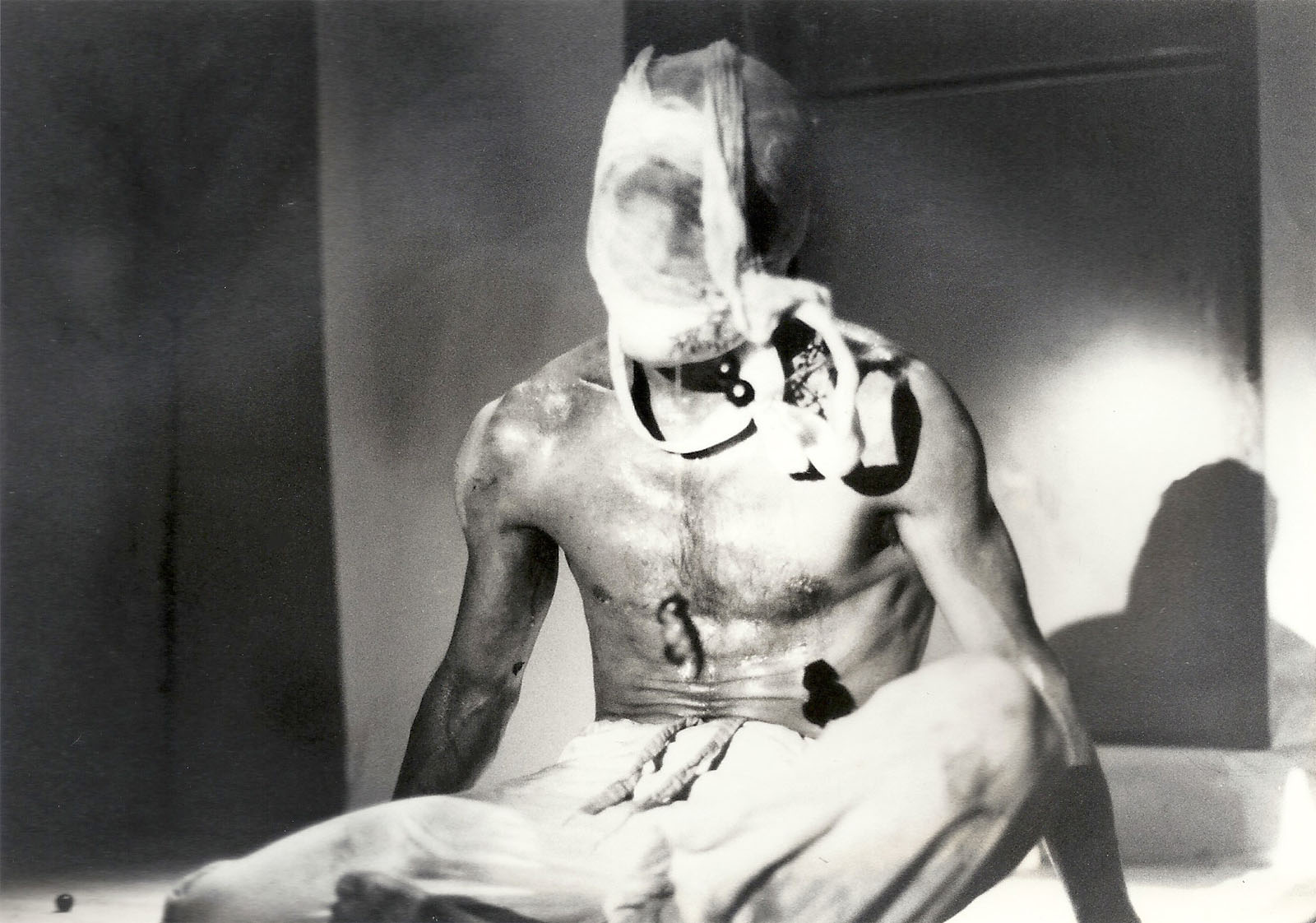
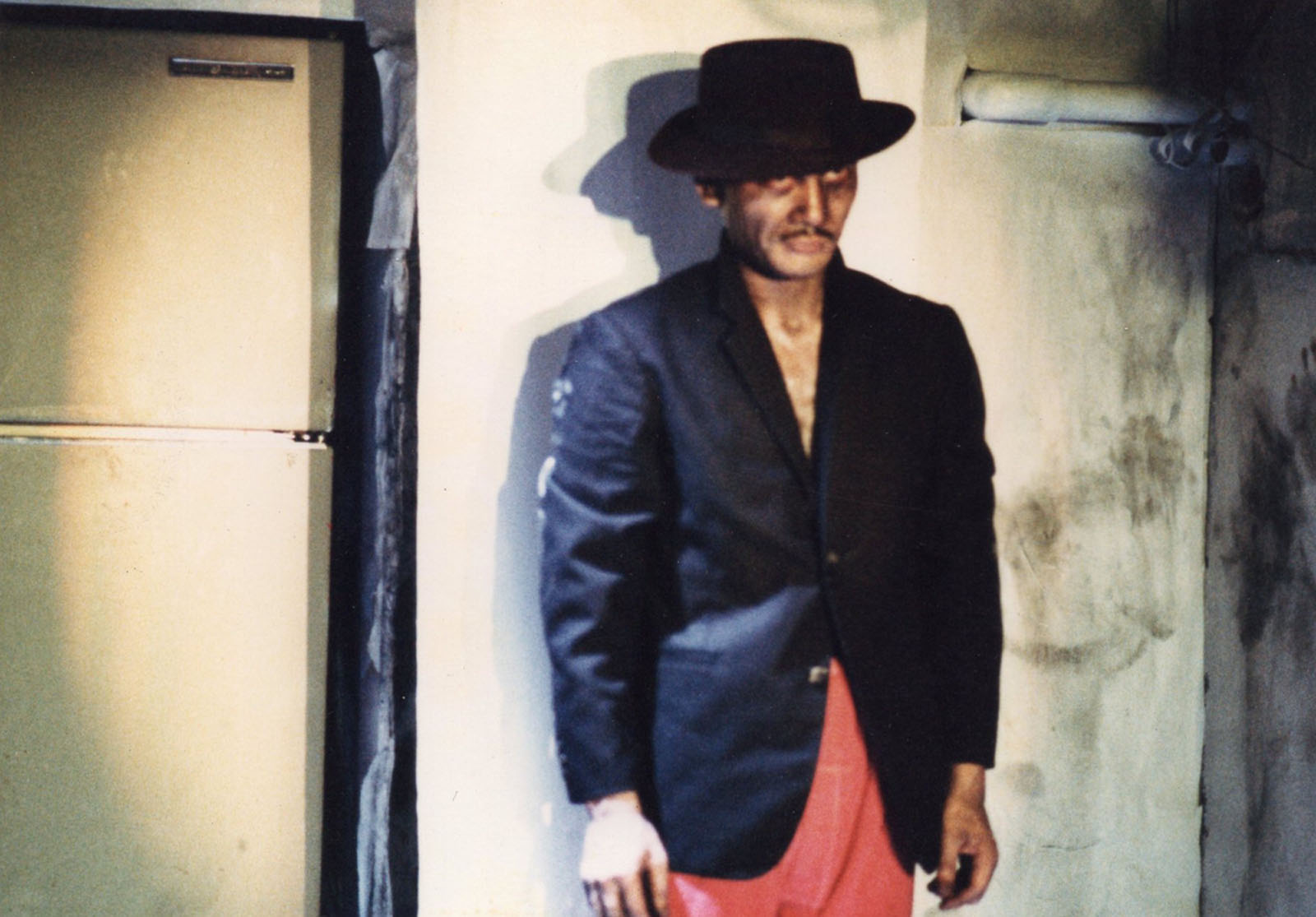

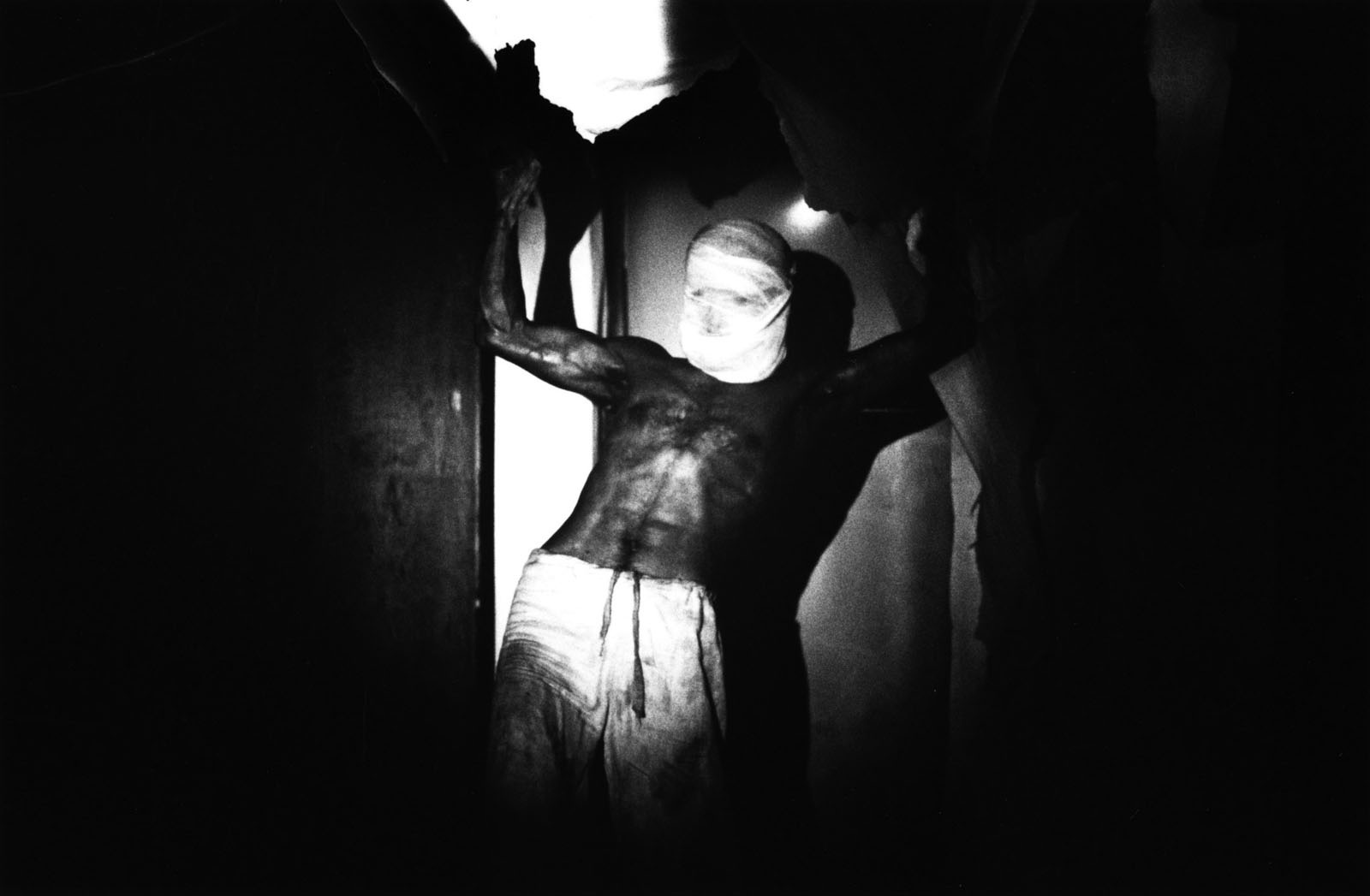
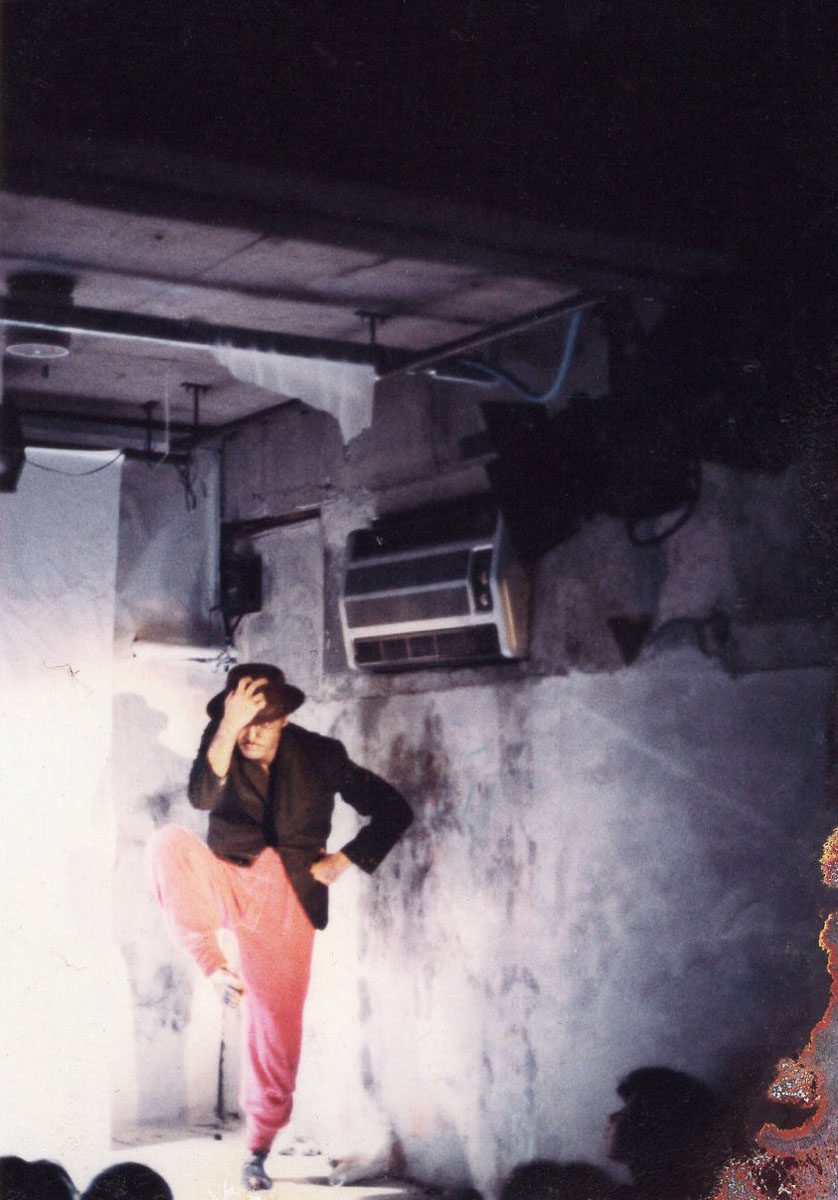
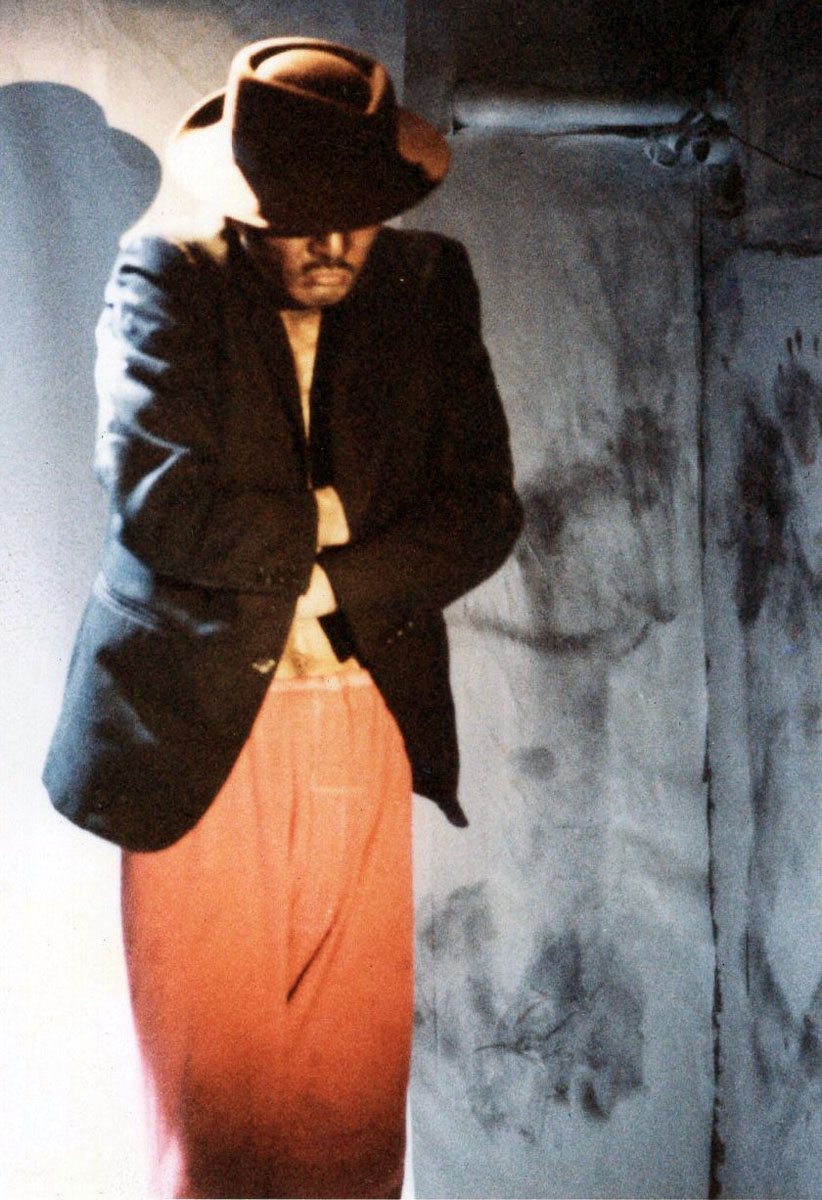
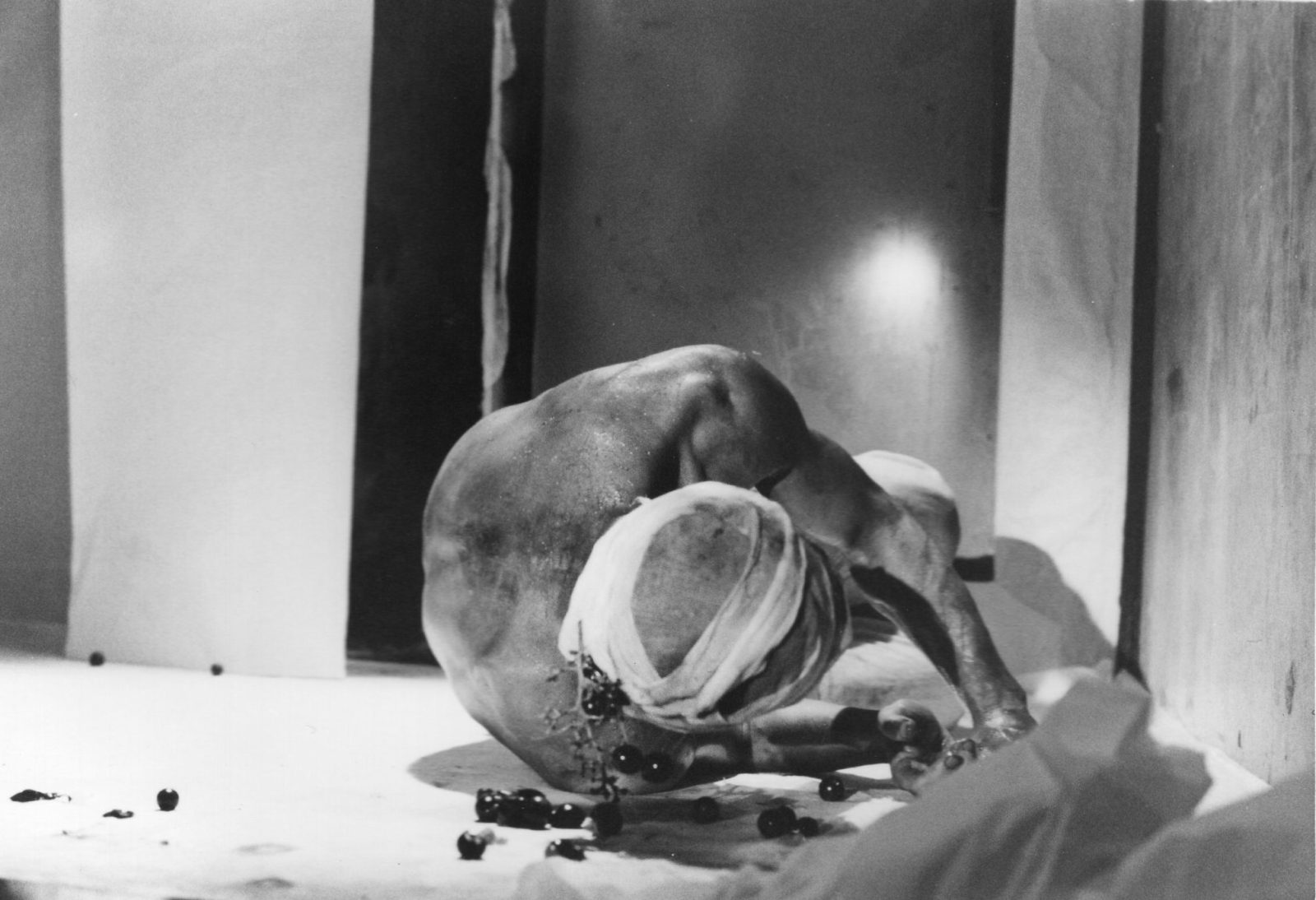

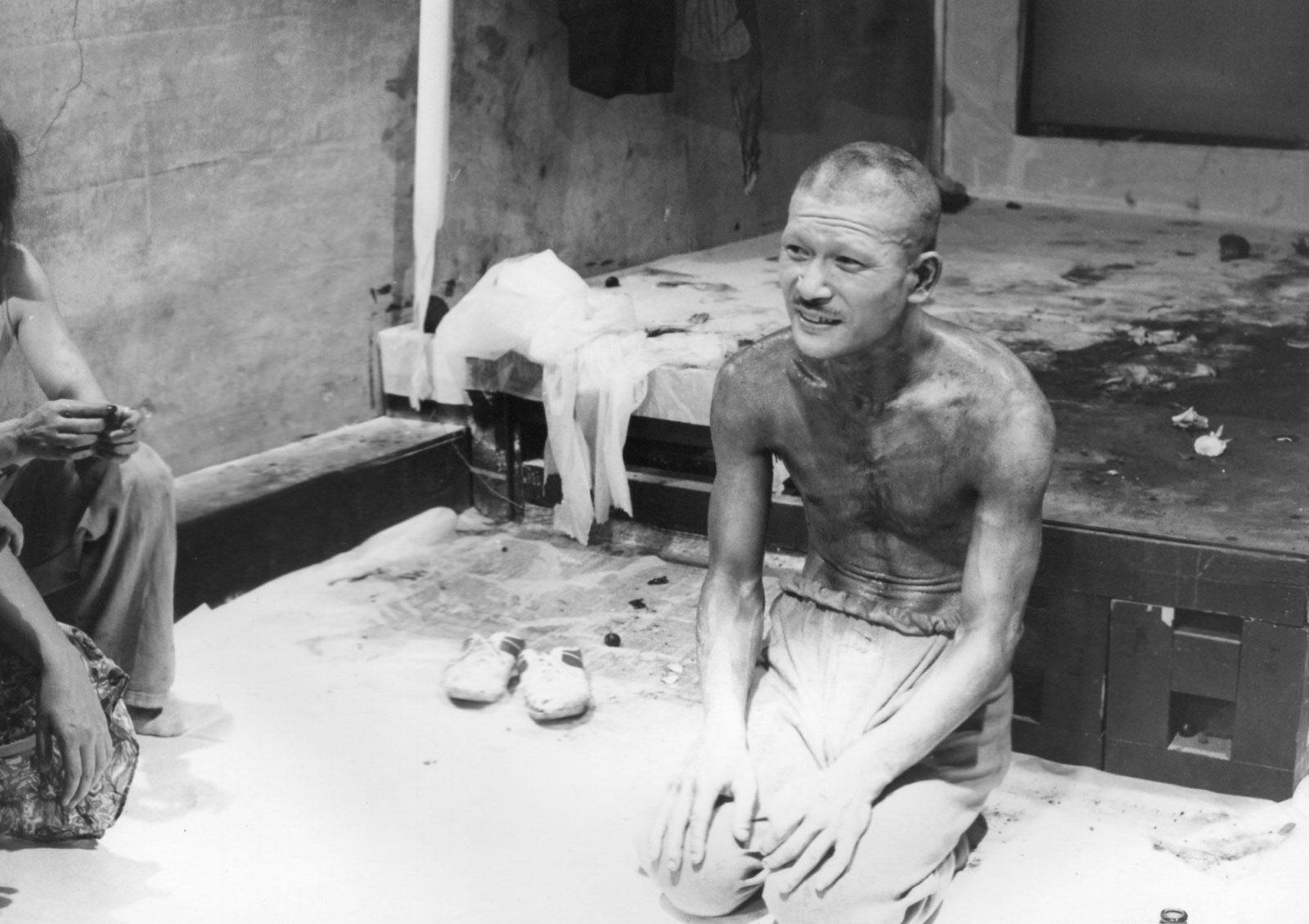
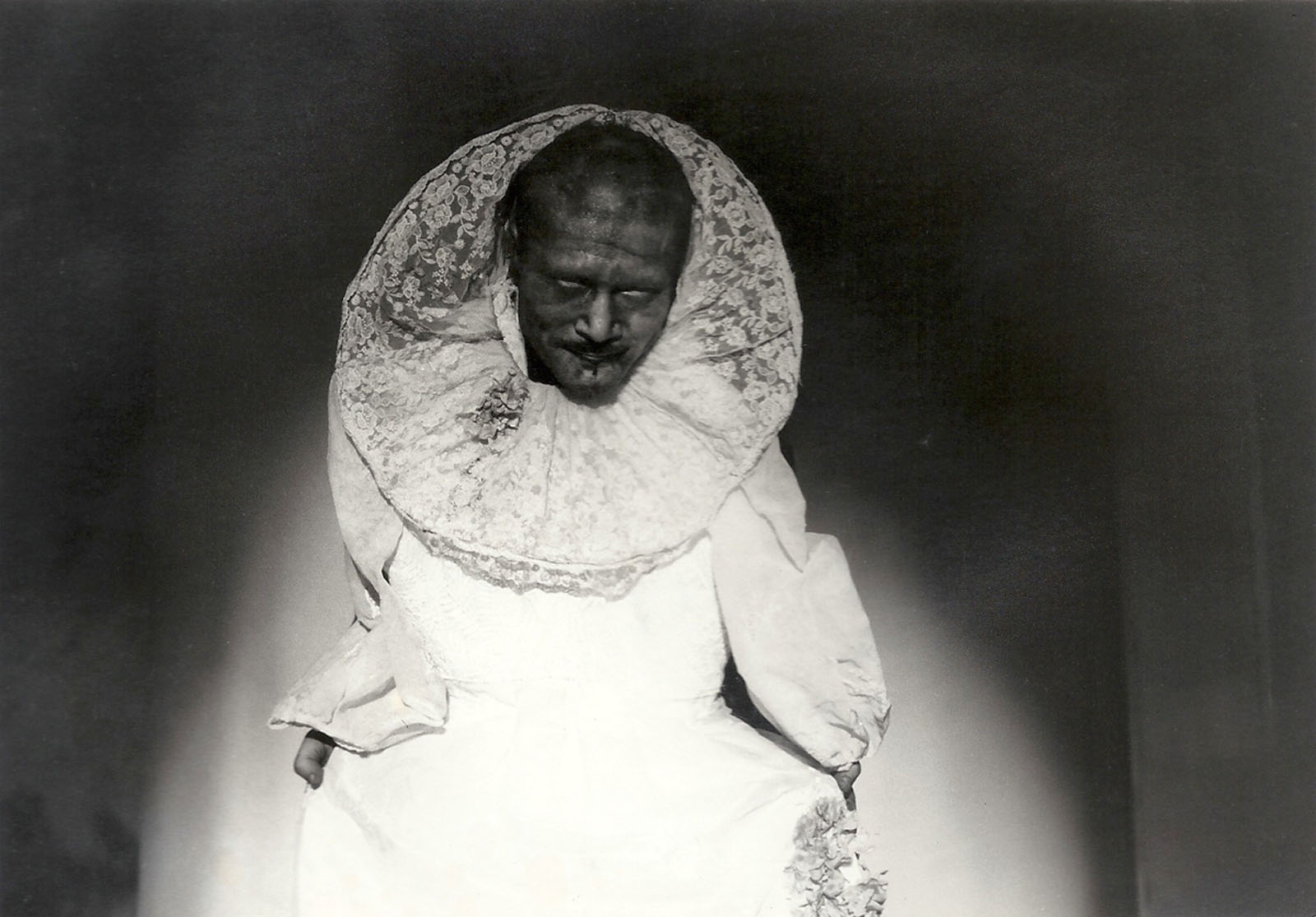
1981
from Invitation
(First part omitted)
Now, with my Momie/Hinagata just before its Europe tour, in an act of entering the casket myself, together with the meaning of engraving the roots of the LOTUS, I have opened the bar “Shy” in the heart of the city in Minami Aoyama, Tokyo. An excerpt by a French poet once said “A bar…where one can see the cemetery”; Shy is a tomb/bar and theater located underground in B1 on Killer Street just down from the Aoyama Cemetery. And under my assumption, most likely, it is a (theater) Bar that is an entrance and exit to Hades that comes out to various places in Asia, Africa, and Europe that my Momie is making its way around from Hokuryukyo in the mountains of Fukui and it is also (a bar) where a divine comedy buzzes in the ears.
I pray that Shy may be a curious shop at the foot of the mammoth that is Tokyo, soaked in the neon of neant, ──Shy!








